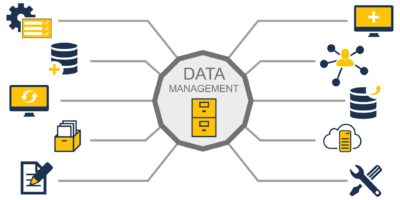Introduction
The Anti-Drone Services Market has emerged as a critical segment in the defense and security industry, driven by the increasing proliferation of unmanned aerial vehicles (UAVs) or drones. As drones become more accessible and widely used for both commercial and recreational purposes, the potential threats posed by unauthorized or malicious drone activities have heightened the demand for effective countermeasures. This report delves into the comprehensive analysis of the Anti-Drone Services Market, covering market trends, technological advancements, regulatory frameworks, key players, and future outlook.
Market Overview
The Anti-Drone Services Market focuses on technologies and services designed to detect, identify, and neutralize unauthorized or hostile drones. As drones become more ubiquitous in both commercial and consumer applications, the risk of their misuse has escalated, driving demand for effective anti-drone solutions. These services are vital for protecting sensitive areas, such as airports, military bases, government buildings, and public events.
Key Trends
- Advancements in Detection Technologies: Use of radar, radio frequency (RF) detection, and optical sensors to accurately identify drones.
- Integration with AI and Machine Learning: Enhancing the capability to distinguish between authorized and unauthorized drones.
- Growing Use of Jamming and Spoofing: Technologies to disrupt the communication between drones and their operators.
- Regulatory Developments: Increasing government regulations and standards for drone usage and anti-drone measures.
Market Drivers
- Rising Drone Incidents: Increased incidents of drone-related security breaches and accidents.
- National Security Concerns: Need to protect critical infrastructure and sensitive locations from drone threats.
- Commercial Sector Demand: Growing need for anti-drone solutions in industries such as airports, prisons, and stadiums.
- Technological Proliferation: Widespread availability of drones leading to higher risk of misuse.
Market Challenges
- High Costs: Significant investment required for advanced anti-drone systems.
- Regulatory Hurdles: Navigating complex regulatory environments across different regions.
- Technological Limitations: Challenges in effectively distinguishing between authorized and unauthorized drones.
- Interference Risks: Potential for anti-drone technologies to interfere with legitimate drone operations and other communication systems.
Benefits
- Enhanced Security: Protection of sensitive areas from potential drone threats.
- Public Safety: Preventing accidents and malicious activities involving drones.
- Operational Efficiency: Safeguarding critical operations without extensive human intervention.
- Compliance: Adherence to regulatory requirements for drone management.
Consumer Insights
- Awareness Levels: Increasing awareness among consumers and businesses about the need for anti-drone measures.
- Adoption Rates: Growing adoption of anti-drone technologies in various sectors.
- Demand for Custom Solutions: Preference for tailored solutions to meet specific security needs.
Opportunities and Threats
Opportunities:
- Emerging Markets: Untapped potential in developing regions.
- Technological Innovation: Continuous advancements creating new market opportunities.
- Strategic Partnerships: Collaboration between technology providers and security agencies.
Threats:
- Rapid Technological Changes: Fast-evolving drone technologies requiring constant adaptation of anti-drone measures.
- Cybersecurity Risks: Vulnerability of anti-drone systems to cyber-attacks.
- Market Competition: Increasing competition among anti-drone service providers.
Technological Advancements
- Advanced Radar Systems: Enhanced radar technologies that provide precise detection and tracking of drones at various altitudes and speeds.
- RF Detection and Jamming: Improved RF detection systems that can identify and jam drone communication signals without interfering with other electronic devices.
- Laser Systems: Development of high-energy laser systems capable of disabling or destroying drones at a distance.
- Drone Capture Technologies: Innovative methods such as net guns, interceptor drones, and tethered capture systems to physically capture rogue drones.
Regulatory Framework
Regulatory bodies worldwide are establishing frameworks to govern the use of anti-drone technologies. These regulations aim to balance the need for security with concerns over privacy and the safe operation of legitimate drones. Key regulatory developments include:
- Certification and Standards: Implementation of certification processes and standards for anti-drone systems to ensure their safety and efficacy.
- Operational Guidelines: Establishment of guidelines for the deployment and use of anti-drone technologies by authorized entities.
- Privacy Protection: Regulations to protect individuals’ privacy and prevent the misuse of anti-drone technologies.
Key Players
The Anti-Drone Services Market is highly competitive, with several key players dominating the industry. These include:
- Dedrone
- DroneShield
- Droneshield
- Raytheon Technologies
- Thales Group
- Lockheed Martin
- Saab AB
- Israel Aerospace Industries (IAI)
- Blighter Surveillance Systems
- Rheinmetall AG
These companies are focusing on research and development, mergers and acquisitions, and strategic partnerships to strengthen their market position and expand their product offerings.
Future Outlook
- Rising Security Concerns: Growing concerns over the misuse of drones for espionage, terrorism, and other malicious activities will drive the demand for advanced anti-drone solutions.
- Government Initiatives: Government investments in defense and public safety will fuel the adoption of anti-drone technologies.
- Commercial Sector Growth: The expansion of the commercial drone industry will necessitate robust anti-drone measures to ensure the safety and security of critical infrastructure and assets.
- Technological Advancements: Ongoing advancements in detection, identification, and neutralization technologies will enhance the capabilities and effectiveness of anti-drone systems.
𝐂𝐥𝐢𝐜𝐤 𝐇𝐞𝐫𝐞, 𝐓𝐨 𝐆𝐞𝐭 𝐅𝐫𝐞𝐞 𝐒𝐚𝐦𝐩𝐥𝐞 𝐑𝐞𝐩𝐨𝐫𝐭
https://stringentdatalytics.com/sample-request/anti-drone-services-market/13452/
Market Segmentations:
Global Anti-Drone Services Market:
#ByCompany
Advanced Radar Technologies
Blighter Surveillance Systems
Dedrone
DroneShield
Liteye Systems
Raytheon Technologies Corporation
SAAB
DETECT
Lockheed Martin
Thales
Global Anti-Drone Services Market:
#ByType
Electronic System
Laser System
Kinetic System
Global Anti-Drone Services Market:
#ByApplication
Government
Military and Defense
Commercial
Global Anti-Drone Services Market: Regional Analysis
The regional analysis of the global Anti-Drone Services market provides insights into the market’s performance across different regions of the world. The analysis is based on recent and future trends and includes market forecast for the prediction period. The countries covered in the regional analysis of the Anti-Drone Services market report are as follows:
North America: The North America region includes the U.S., Canada, and Mexico. The U.S. is the largest market for Anti-Drone Services in this region, followed by Canada and Mexico. The market growth in this region is primarily driven by the presence of key market players and the increasing demand for the product.
Europe: The Europe region includes Germany, France, U.K., Russia, Italy, Spain, Turkey, Netherlands, Switzerland, Belgium, and Rest of Europe. Germany is the largest market for Anti-Drone Services in this region, followed by the U.K. and France. The market growth in this region is driven by the increasing demand for the product in the automotive and aerospace sectors.
Asia-Pacific: The Asia-Pacific region includes Singapore, Malaysia, Australia, Thailand, Indonesia, Philippines, China, Japan, India, South Korea, and Rest of Asia-Pacific. China is the largest market for Anti-Drone Services in this region, followed by Japan and India. The market growth in this region is driven by the increasing adoption of the product in various end-use industries, such as automotive, aerospace, and construction.
Middle East and Africa: The Middle East and Africa region includes Saudi Arabia, U.A.E, South Africa, Egypt, Israel, and Rest of Middle East and Africa. The market growth in this region is driven by the increasing demand for the product in the aerospace and defense sectors.
South America: The South America region includes Argentina, Brazil, and Rest of South America. Brazil is the largest market for Anti-Drone Services in this region, followed by Argentina. The market growth in this region is primarily driven by the increasing demand for the product in the automotive sector.
Click Here, To Buy Premium Report
https://stringentdatalytics.com/purchase/anti-drone-services-market/13452/?license=single
Key Questions Answered in This Report:
1. What are the current trends influencing this anti-drone services market?
2. What are the primary drivers propelling that growth in the anti-drone services industry?
3. What are the main challenges and barriers hindering this adoption of anti-drone technologies?
4. Which regions are leading in that implementation of anti-drone services, and why?
5. What is the projected market growth for this anti-drone services market in the next 5-10 years?
6. Who are the key players in that anti-drone services sector, and what are their strategies?
7. How is government policy and regulation impacting this anti-drone services market?
8. What are the latest technological advancements in that anti-drone services sector?
9. How are consumer preferences and behavior changing in relation to this anti-drone services market?
10. What investment opportunities are emerging as a result of that growth in the anti-drone services industry?
About Stringent Datalytics
Stringent Datalytics offers both custom and syndicated market research reports. Custom market research reports are tailored to a specific client’s needs and requirements. These reports provide unique insights into a particular industry or market segment and can help businesses make informed decisions about their strategies and operations.
Syndicated market research reports, on the other hand, are pre-existing reports that are available for purchase by multiple clients. These reports are often produced on a regular basis, such as annually or quarterly, and cover a broad range of industries and market segments. Syndicated reports provide clients with insights into industry trends, market sizes, and competitive landscapes. By offering both custom and syndicated reports, Stringent Datalytics can provide clients with a range of market research solutions that can be customized to their specific needs.
Contact Us
Stringent Datalytics
Contact No- +1 346 666 6655
Email Id- sales@stringentdatalytics.com




Leave a Reply